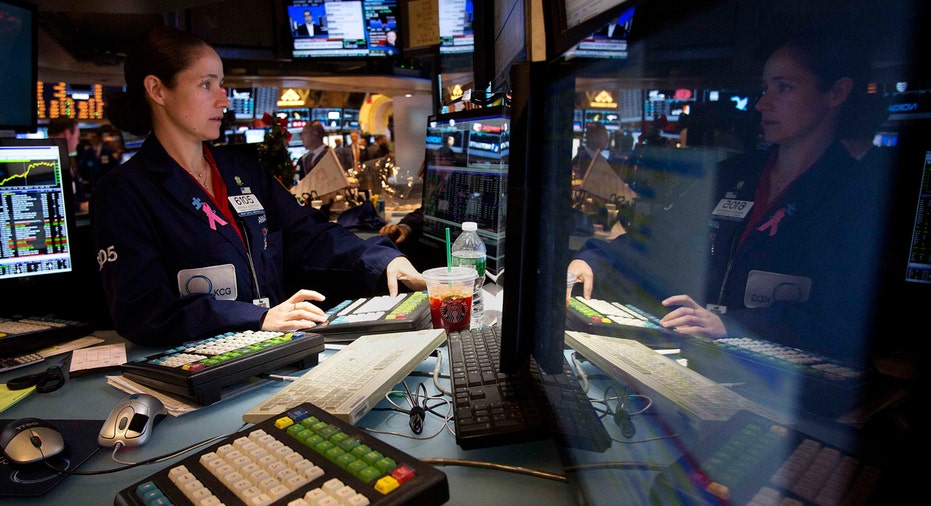Stocks Deteriorate into Close as Oil, Energy Drag

U.S. equities deteriorated into the close of trade on Wednesday as oil was once again clobbered by oversupply worries after an unexpected inventory build at the Cushing hub.
The Dow Jones Industrial Average tumbled 117 points, or 0.66% to 17603. The S&P 500 shed 15 points, or 0.72% to 2063, while the Nasdaq Composite was 42 points lower, or 0.82% to 5065.
All 10 S&P 500 sectors were in negative territory as energy led the way down, falling 1.5% in recent action.
Today’s Markets
As traders looked ahead to the end of a new year holiday-shortened week, Wall Street dipped into negative territory as energy and oil continued to slide. The Dow slipped further into negative territory for the year, looking for 1.23% losses to wrap up 2015. The S&P 500 and Nasdaq are both parked in positive territory for now.
Oil continued to be a focus for the Street as prices slipped after a rally in the prior session. West Texas Intermediate crude was 3.35% lower, to $36.60 a barrel in recent action. Brent, the international benchmark, declined 3.52% to $36.46 a barrel.
Michael Block, chief strategist at Rhino Trading Partners, said a slew of oil-related headlines added to selling pressure. The American Petroleum Institute reported a 2.9 million barrel build, the biggest increase in seven weeks, and more than the previous week’s 3.5 million barrel decline.
Weekly data from the Department of Energy, meanwhile, didn’t help relieve selling pressure. The data showed a build of 2.63 million barrels of U.S. crude stockpiles, a contrast to expectations for a 2.5 million barrel draw.
It’s the global supply glut that continued to weigh on the minds of investors.
“Overnight, we had Iran’s OPEC representative saying that oil would trade in the $35 - $55 range next year, and we learned that Kuwait is using $30 oil as its base case as it constructs a budget for next year. That budget is not going to be pretty. And neither is oil so far,” he explained.
What lower oil prices mean for the U.S. economy in 2016 isn’t all bad news, according to Wells Fargo’s Paul Christopher, head global macro strategist, and Craig Holke, global research analyst. They say supply is beginning to moderate as higher-cost production is taken offline, and although it detracts from economic activity, spillover effects are geographically limited.
“We continue to believe that 2016 will offer U.S. GDP growth of2.6%, while inflation should remain under control, rising 2%. The U.S. consumer continues to be positive, supported by healthy labor market and low commodity prices,” they explained.
Elsewhere in commodities, metals were mixed as gold declined 0.77% to $1,060 a troy ounce. Silver declined 0.61% to $13.81 an ounce, while copper gained 0.47% to $2.14 a pound.
Investors also parsed comments from International Monetary Fund Managing Director Christine Lagarde who said global growth next year could be “disappointing and uneven.”
“She is worried that the Fed tightening could lead to higher corporate defaults, and she’s also worried about the ‘shift’ in China’s investment model from investing to consuming,” Block said.
Meanwhile, one lone report on the U.S. economy was released Wednesday. The National Association of Realtors said contracts to buy previously-owned homes saw an unexpected decline last month. Sales fell 0.9% compared to expectations for a 0.5% increase. On a year-over-year basis, however, sales rose 2.7%.
Barclays analysts in a note said the droop from last month’s figures could prove to be concerning for the overall housing market.
“The ongoing softness in pending home sales suggests some risk to the housing market outlook in early 2016. Because the housing market is often a bellwether for the health of the consumer sector, we will be attentive to any further indication of slowing,” they explained.
They noted, though, despite softness since last summer, pending home sales have been able to hold up relative to existing home sales, and they see that softness as only temporary.



















